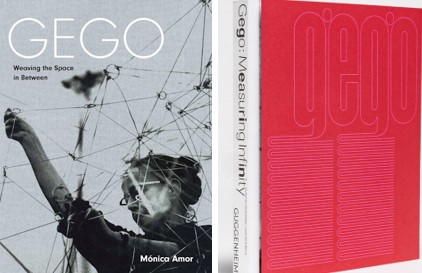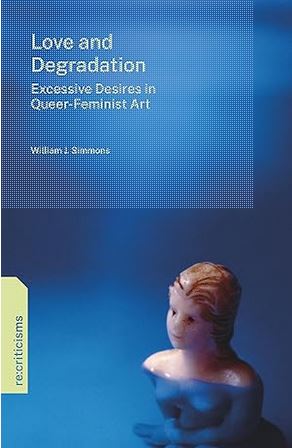
This will be my valedictory post! After three years at the Woman’s Art Journal, I’m stepping down from my role as Book Reviews Editor. In my life’s next chapter, I’ll be teaching low-income students from traditionally marginalized communities at an elementary school in the Bronx.
My favorite part of this job has been collaborating with review contributors. My sincere gratitude and warm regards go to all the art historians who have entrusted me with their writing. I can’t wait to see many of you at CAA!
I’m also glad to express my heartfelt thanks to the WAJ team:
- Dr. Erin Devine, Contributing Book Reviews Editor, for her painstaking and highly astute content-editing of numerous reviews.
- Dr. Helena Shaskevich, the journal’s inaugural Interviews Editor, for her excellent work and galvanizing energy in preparing the journal’s soon-to-be-published first artist interview.
- Ed Farnsworth, Webmaster at Old City Publishing, for his unfailing attentiveness in launching and helping to maintain WAJ’s new website.
- Guy Griffiths, Owner of Old City Publishing, for his patience in awaiting edited reviews and for his excellent company at the CAA Book Fair Booth.
- Coeditor-in-Chief Dr. Joan Marter, for her years of forging WAJ’s legacy.
- Most of all, Coeditor-in-Chief Dr. Aliza Edelman, the staunchly devoted steward of this crucially important journal. I’m grateful for her support of my work; for our wide-ranging, thought-provoking conversations about women and feminism in art; for our scholarly collaborations that have produced, among other things, a session at the 2025 CAA conference; and for our quirky adventures to exhibitions, gallery show openings, and more.
I also have the immense pleasure of welcoming my successor: Dr. Melissa Mednicov, Associate Professor of Art History at Sam Houston State University in Huntsville, Texas, and author of two excellent Routledge volumes, the 2024 Jewish American Identity and Erasure in Pop Art and 2018’s Pop Art and Popular Music: Jukebox Modernism. WAJ is enormously fortunate to have someone of this Melissa’s caliber taking over as Book Reviews Editor. Returning and new contributors, you’ll be in very good hands!
As I say farewell, please indulge my making one more set of recommendations of recently published volumes. If any of these books falls within the scope of your expertise, I hope you’ll consider reviewing it for WAJ. Please email Melissa at mmednicov@womansartjournal.org express your interest. Remember, you’ll receive a hard copy for free!

Catherine Hall-van den Elsen. Gender and the Woman Artist in Early Modern Iberia. Routledge, 2024. This study considers the structural obstacles women artists in Spain and Portugal encountered from the mid-sixteenth to the eighteenth century as unmarried, married, or cloistered women. Many of these painters, engravers, and sculptors appear here for the first time in Anglophone scholarship.

Andrea Pappas. Embroidering the Landscape: Women, Art, and the Environment in British North America, 1740-1770. Lund Humphries, 2023. Pappas demonstrates that American women needlework artists of the mid-eighteenth century engaged insightfully—and in different ways than male practitioners in other artistic media—with the nascent fields of natural history and botany as well as with contemporary approaches to agriculture, gardening, and animal husbandry.

Lee Ann Timreck. Pieces of Freedom: The Emancipation Sculptures of Edmonia Lewis and Meta Warrick Fuller. University of Mississippi Press, 2023. Timreck innovatively blends art-historical scholarship with African American folkloric modes of narration in analyzing the 1867 marble sculpture Forever Free by Edmonia Lewis (1844−1909) and the 1913 bronze Emancipation by Meta Warrick Fuller (1877−1968) alongside oral histories to evoke the lived experience of formerly enslaved Blacks in the US after Emancipation.

Lauren Jimerson. Painting her pleasure: Three women artists and the nude in avant-garde Paris. Manchester University Press, 2023. Looking closely at the male and female nudes of Suzanne Valadon (1865−1938), Émilie Charmy (1878−1974), and Marie Vassillieff (1884−1957), including some works that have never been published before, Jimerson explores the ways these paintings expanded the visual and intellectual frontiers of modernism in early twentieth-century Paris.

During China’s transition from empire to republic in the early twentieth century, Sung argues in this book, women artists employing “traditional” idioms in embroidery (Shen Shou, 1874–1921) and painting/calligraphy (Wu Xingfen, 1853–1930; Jin Taotao, 1884–1939; and the members of the Chinese Women’s Society of Calligraphy and Painting) engaged actively with modernist discourse and helped to shape China’s cultural relations with other nations.

Mary Anne Hunting and Kevin D. Murphy. Women Architects at Work: Making American Modernism. Princeton University Press, 2025. Within a feminist framework, Hunting and Murphy shed light on the careers and projects—and the contributions to modernism in the US—of women who graduated from the Cambridge School of Architecture and Landscape Architecture in Massachusetts between 1916 and 1942, including numerous previously overlooked figures like Louisa Vaughan Conrad (1913–1990).

Mónica Amor. Gego: Weaving the Space In Between. Yale University Press, 2023.
AND
A monograph and exhibition catalogue respectively, these books are pivotal contributions to the scholarship on the Hamburg-born, Caracas-based Gego (Gertrud Goldschmidt, 1912–1994), whose irregular abstractions range from myriad works on paper to the room-sized, enfolding, net-like wire installation Reticulárea (1969–1982). May I propose a double review? (See my paean to the multiple-book review form here!).

Kimberly Lamm, Addressing the other woman: Textual correspondences in feminist art and writing. Manchester University Press, 2024 (hardcover 2018). Lamm pairs three feminist artists of the late 1960s and 1970s who deployed language visually in their work with three writers of the same era who similarly, she shows, addressed themes of women’s visibility and invisibility: Adrian Piper (b. 1948) with Black activist Angela Davis; Nancy Spero (1926–2009) with SCUM Manifesto author Valerie Solanas; and Mary Kelly (b. 1941) with film theorist Laura Mulvey.

Tiffany E. Barber, Undesirability and Her Sisters: Black Women’s Visual Work and the Ethics of Representation. NYU Press, 2025. Barber looks closely at multisensory bodies of work by Kara Walker (b. 1969), Wangechi Mutu (b. 1972), Xaviera Simmons (b. 1974), and Narcissister that challenge conventional visions of Black beauty and that problematize recent theoretical approaches to the representation of Black women in art and performance, raising key ethical questions regarding self-advocacy and self-definition.

William J. Simmons. Love and Degradation: Excessive Desires in Queer-Feminist Art. Penn State University Press, 2024. In this collection of new essays that favor the empathic and personal over the taxonomic and hierarchal, Simmons casts a close yet kaleidoscopic gaze onto works by visual, musical, film, and television artists that express deep desire.

Hannah Ryan and Leslie A. Wolff, eds. Nourish and Resist: Food and Feminisms in Contemporary Global Caribbean Art. Yale University Press, 2024. Works engaging with food and foodways by María Magdalena Campos-Pons (b. 1959), Tania Bruguera (b. 1968), Joiri Minaya (b. 1990), and a host of other Caribbean and Caribbean-diasporic artists, the contributors to this edited volume show, provide trenchant interventions on such vital themes as colonialism, racism, domestic labor, generational memory, the ecological crisis, and more.
Happy reading, my feminist art history friends, and best wishes! I’ll miss you!
Sincerely,
Alison